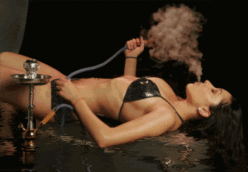Many people all over the world are now hooked on a new trend – herbal smoking, also known as legal bud smoking. Legal bud smoking involves inhaling the fumes of several herbs, after lighting them, either through specialized pipes, chillums or just by rolling them in cigarette paper.
A wide variety of these herbs have been branded as legal buds. These herbs are those which have been used for centuries in shamanic potions and traditional tribal teas. Herbal smokes are prepared by blending two or more of these herbs in varying proportions. Most popular herbs used are salvia divinorum, hops, chamomile, damiana, ginseng, kava kava, wild dagga, passion flower, star of Bethlehem, skullcap, Artemisia vulgaris, scotch broom tops, betel nut powder and many more. Some manufacturers also call them marijuana alternatives. These blends also contain powders of the mugwort, in order to hold the mixture together.
Many of these ingredients, like the Ayurveda and Persian, are well-known for their medicinal properties and even used in medicinal branches. Some of them are secretly grown. The salvia divinorum has been used for hundreds of years by the shamans of the Aztec civilization for its healing properties. The skullcap is another herb which supposedly relieves a person of worries and tensions. Damiana and ginseng are reputed aphrodisiacs.
American manufacturers procure these herbs from the Hawaiian Islands or Mexico, where the herbs are grown in secret plantations. There is a huge market in America for smokers of legal buds. Some claim that it gives the same high as smoking pure marijuana, but this is a misconception. Most of these herbs do provide ‘highs’, but they are very short-lived.
Herbal smoke is inhaled through pipes or chillums. Native Indians just roll the mixture in a betel leaf. Some people use cigarette paper for rolling the mixture.
The general perception is that herbal smoking is not as harmful as tobacco-smoking. Herbal cigarettes do not contain tobacco, and hence no nicotine. Some manufacturers even claim that these herbal blends do not affect children in any adverse manner. However, health experts have a different point of view. Burning leaves release tar, which clogs the lungs over a period of time. Herbal mixtures may not be as addictive as tobacco, but they do create a craving and a desire to smoke them repeatedly. The only proven effect of herbal smoke is its numbing effect of the nervous system, but health activists still hold herbal smoke in contempt.














